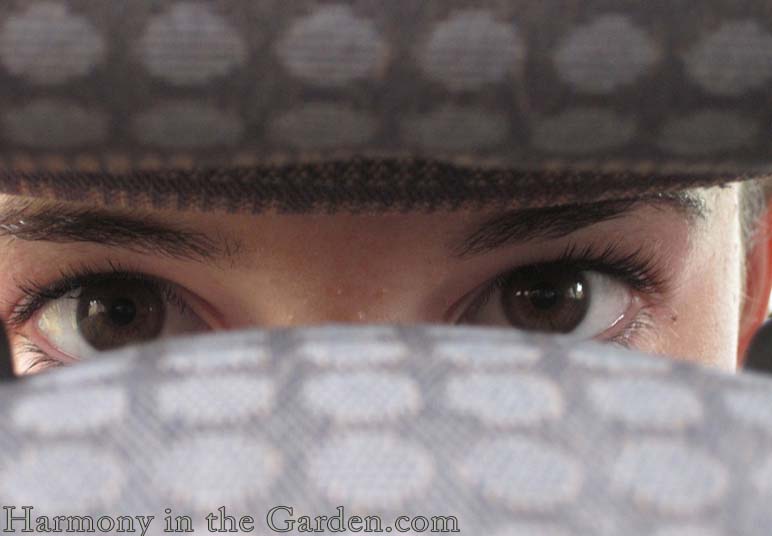 As a designer, I’m often asked how I go about deciding how and where to begin when it comes to transforming a garden bed.
As a designer, I’m often asked how I go about deciding how and where to begin when it comes to transforming a garden bed.
While visualizing where to begin is relatively easy for me (it’s what I do for a living, after all!) I realize that’s not necessarily the case for others. In fact, I experienced this feeling myself during my kitchen remodel. I was amazed at how helpless and overwhelmed I felt when I walked into the tile shop and looked around at row after row of gorgeous tiles just waiting for me to decide. What style did I like? Where would I start? And where would I end up? The more I looked, the more frustrated I became.
Over the past 15 years, I’ve talked to hundreds of overwhelmed gardeners who feel the same way that I felt in the tile shop. They just don’t know where or how to begin. The first chapter of my new book, Refresh Your Garden Design with Color, Texture and Form deals specifically with learning how to look at your garden again with fresh eyes. Easier said than done – believe me. But once you learn to see your garden with a clear perspective, you’ll then be able to figure out where to begin your garden’s transformation.
One of the easiest ways to begin looking at your garden in a new light is to learn how to use your camera to help you identify your garden’s problem areas. Sounds simple enough, right? That’s because it is! Whenever I’m contemplating transforming a garden bed, I’ll use my camera to take several photos of it. After printing a few of the photos out, I’ll sit in a comfy chair (away from all the garden’s other distractions) and study the photo, with a Sharpie pen in hand. You won’t believe how different your garden looks in a photo compared to a few moments ago when you were standing in it. Give it a try – you’ll be amazed!
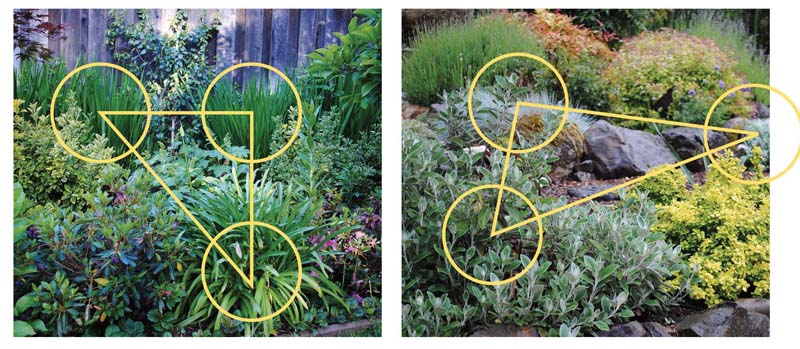 It will soon become crystal clear what needs to be done. Perhaps there’s a dying shrub that needs to be composted? Or maybe there’s no rhyme or reason to your plantings, and it needs a little continuity to help tie it all together. Sometimes its as simple as repeating a basic form, color or texture. Or, perhaps contrast is needed to help break up a monotonous combination. The list goes on and on.
It will soon become crystal clear what needs to be done. Perhaps there’s a dying shrub that needs to be composted? Or maybe there’s no rhyme or reason to your plantings, and it needs a little continuity to help tie it all together. Sometimes its as simple as repeating a basic form, color or texture. Or, perhaps contrast is needed to help break up a monotonous combination. The list goes on and on.
The next step is to use your Sharpie pen to draw directly on the photo, circling the problem areas and making notes of what you think might help. Then, take that photo to the nursery and use it as a guide when looking for a specific plant. This guide will help narrow down your choices so when you walk into the nursery you won’t become overwhelmed and end up grabbing the nearest pretty flower. Instead, you’ll be focused on looking for the specific, problem-solving element you’ve noted on your photograph (i.e.: bold foliage, upright form, delicate texture, etc.).
To help clarify this concept, I thought I’d show you a few examples of some simple before, during and after photos that I’ve created over the years. The first photo will be the before, the second photo indicates my suggestions to help transform the bed, and the third photo will be the finished garden bed.
1. Remodeled Ranch Home
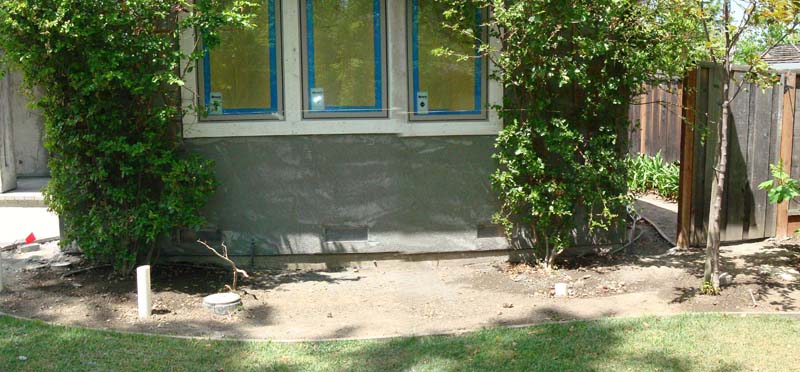
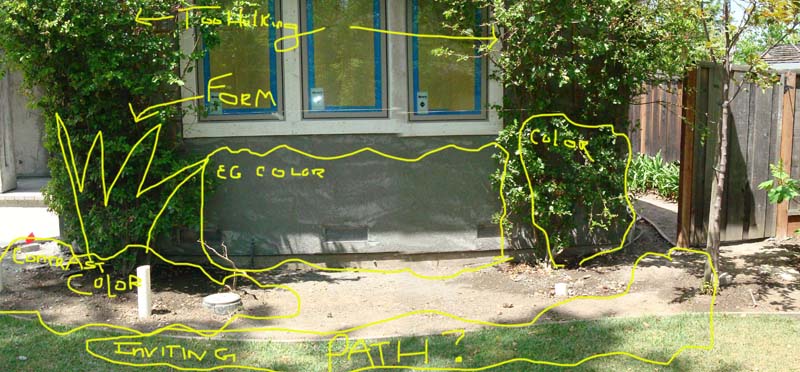
My notes indicate where I’d like to see plants with interesting shapes, where I’d like to see color from flowers or evergreen foliage (‘eg’), and even the placement of a pathway in lieu of the threadbare lawn.
I wanted to remove the bulky shrubs on either side of the window to draw attention to the beautiful color and windows of their newly remodeled home.
2. Green and Serene

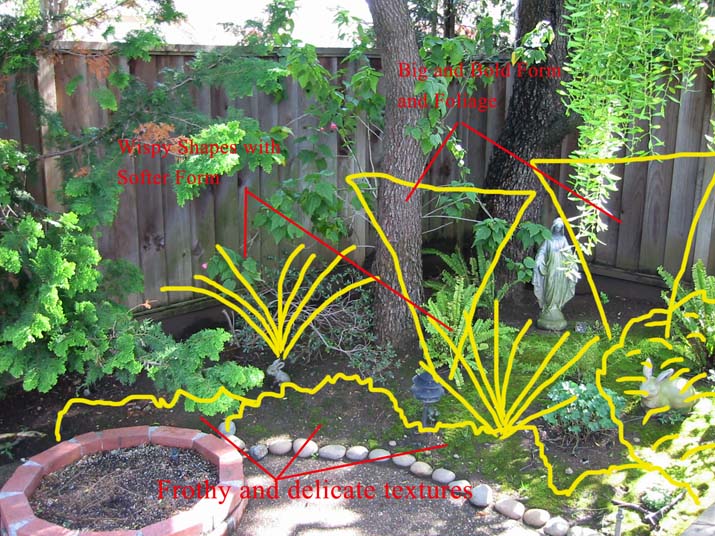
In this garden, the client wanted a simple color palette – green, green and more green. With just a hint of white.
To keep an all-green combination from lulling one to sleep, it’s important to include plenty of contrast. In this example, you can see the contrast in foliage shape (bold, delicate, strappy, frothy) as well as shades of green (light, medium and dark).
3. Repetition of Form
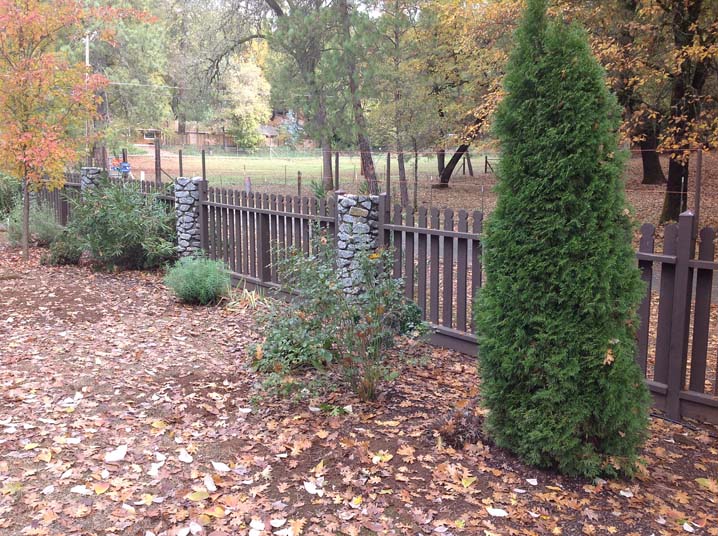

In the original photo, the lone Thuja stood out like a big, vertical sore thumb. The solution? Repeating the Thuja’s strong upright form by adding a few more nearby, and echoing the shape with the vertical flowers of the iris, lilies and veronica.
To wake things up a bit, we added a little contrast in foliage size and shape, thanks to the large and velvety leaves of verbascum and silver sage.
I hope these simple examples have shown you just how easy it is to begin identifying problem spots in a garden bed, and how you can start the transformation process – all thanks to your trusty camera.
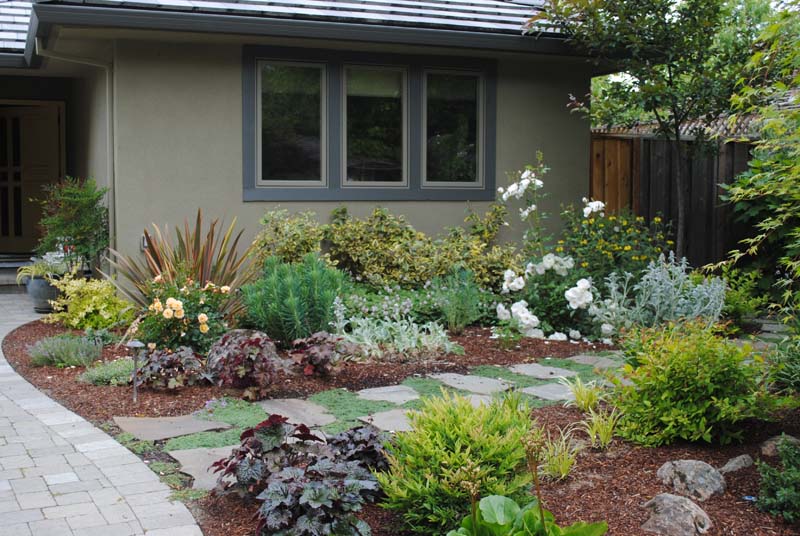

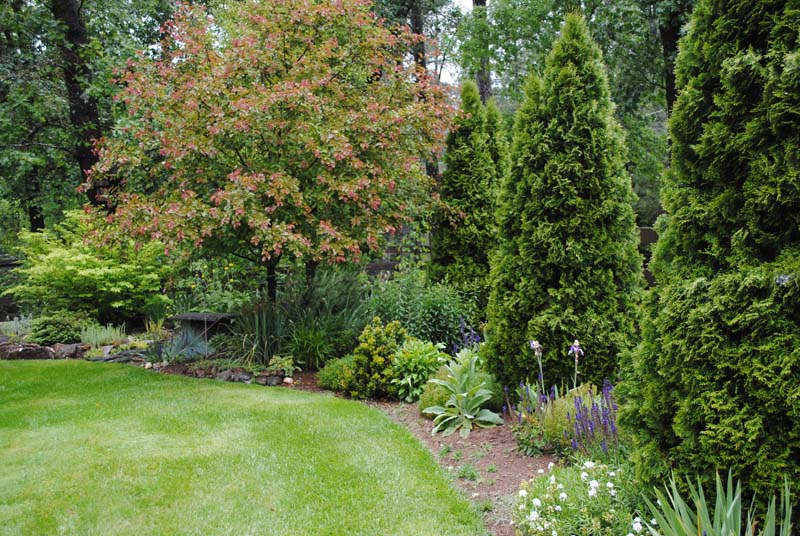






10 Comments
I absolutely love your book, but I do have a question: What are the three red-violet plants pictured on page 42? Thx.
Hi Jennifer – I’m so glad you’re enjoying my book! Thank you so much!! The three plants are a dianthus (also called Cottage Pinks – not sure of the variety, unfortunately. I highly recommend buying the old fashioned dianthus from Annie’s Annuals – hers are the only ones that seem to last in the garden. The others that you may see in the big box stores are so overbred that they’re really only annuals. Here’s a link: https://www.anniesannuals.com/plt_lst/lists/search/lst.srch.asp?srch_term=dianthus) The petunias are some that I saw at the Spring Trials at Ball Horticulture – called ‘Shock Wave Deep Purple’. I think you can buy them at various sites. Here’s another link: http://www.ballhort.com/Growers/plant_info.aspx?phid=048605220004353. And the other plant is an ornamental kale that I had purchased in a 4″ pot. The kind that are everywhere this time of year. Sorry, but I don’t know the specific variety of this one. I hope this helps!
I’m sorry, I should have been more specific. I meant the picture on the bottom of Stonecrop Gardens. I checked out their website to see if I could find any info., but no luck (though I did have a nice time exploring their beautiful gardens online). Thank you for you fast and thorough reply! : )
Hi Jennifer – oh, I should’ve known you were talking about the one photo that I can’t identify! 😉 I took that photo while in a public garden in NY, as we were rushing out of there after a long day of garden touring because my friend’s young daughter was getting tired and antsy. All I can remember is my friend telling me the larger foliaged plant in the back was a coleus whose name I’ve since forgot. I’m so sorry!
Thanks for sharing your thought process.
As a very green designer I find myself at a loss when staring at a space, it takes a lot of thought for me to see how I can improve an established garden, it is easier to start from nothing.
I read your book cover to cover, and I am ready to start with my own garden, who is a little tired in some areas.
Happy Thanksgiving!
Laura
You’re so welcome, Laura! I’m so glad you enjoyed my book and really hope it helps you with your new design business (as well as in your garden!) Happy Thanksgiving to you, too! – Rebecca
I just bought a small house, dare I say ‘cottage’, that needs refreshing in both garden and kitchen. Your idea of marking up a photo is truly an inspired idea for a first step. I should read the rest of your book! Thank you for sharing your process.
Congratulations on your new ‘cottage’, Marilyn! I think the photo idea will definitely help you transform your new garden. What a fun project you have ahead of you. Whenever I moved into a new home it was always so exciting to see what the previous owners had planted – with little surprises popping up throughout the year.
These are great examples, and it is also my favorite way to begin changing a garden! Someday I’ll try photoshop, but for now I’ve been using the marker in MS Paint, or the sharpie. : ) Sketching the forms definitely helps narrow down the plant selection, and yet gives me options when the nursery doesn’t have exactly what I want. I can hardly wait to read your book! It’s on my amazon wishlist, and I entered the Goodreads giveaway!
Thanks Gina – I’m so glad to hear you already use this technique! It’s so easy yet so effective, isn’t it? Fingers crossed you’re one of the lucky winners over at Goodreads, too…